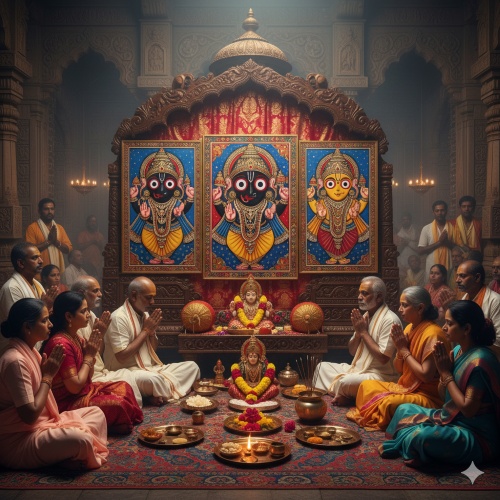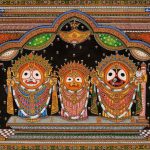Anavasara is a deeply symbolic period in the Jagannath tradition. It begins right after Snana Purnima, the grand ceremonial bath of Lord Jagannath, Balabhadra, and Subhadra. For fifteen days, the deities are believed to fall unwell due to the ritual bathing and are taken into isolation inside the Jagannath Temple in Puri.
Why Is Anavasara Observed?
Following the intense Snana Purnima rituals, where the deities are bathed with 108 pots of holy water, they are believed to suffer from fever. To recover, they are kept in seclusion for 15 days inside the temple’s inner chambers.
During Anavasara, the idols are kept away from public view. No darshan is allowed during this period. The temple’s inner sanctum remains closed. This period reminds devotees that even divine forms experience cycles of energy and pause, much like humans.
What Happens During These Days?
The temple remains open, but devotees cannot see the original idols. Instead, devotees worship Anavasara Patti (Pattachitra paintings of the deities) in their place. Even the famous Patitapabana idol at the entrance is covered during this time. These paintings are offered food and prayers until the original idols are ready to return.

AI-generated image created with Google Gemini, November 18, 2025
Spiritual Message and Preparation
Anavasara reminds devotees of the deities’ human-like traits, creating a deep emotional bond. This temporary absence also builds a spiritual yearning, making the deities’ reappearance on Netrotsava (Eye Ceremony) especially moving. The very next day, they begin their journey in the famous Rath Yatra.
Culmination Before Rath Yatra
On the final day, the rejuvenated deities appear before the public in Nava Yauvan Darshan. This marks their readiness for the grand Rath Yatra the next day.
Anavasara is not just a temple ritual. It’s a time of silent devotion, anticipation, and emotional connection that prepares devotees for the vibrant celebrations ahead.
Feature Image Credit: Pinterest.




